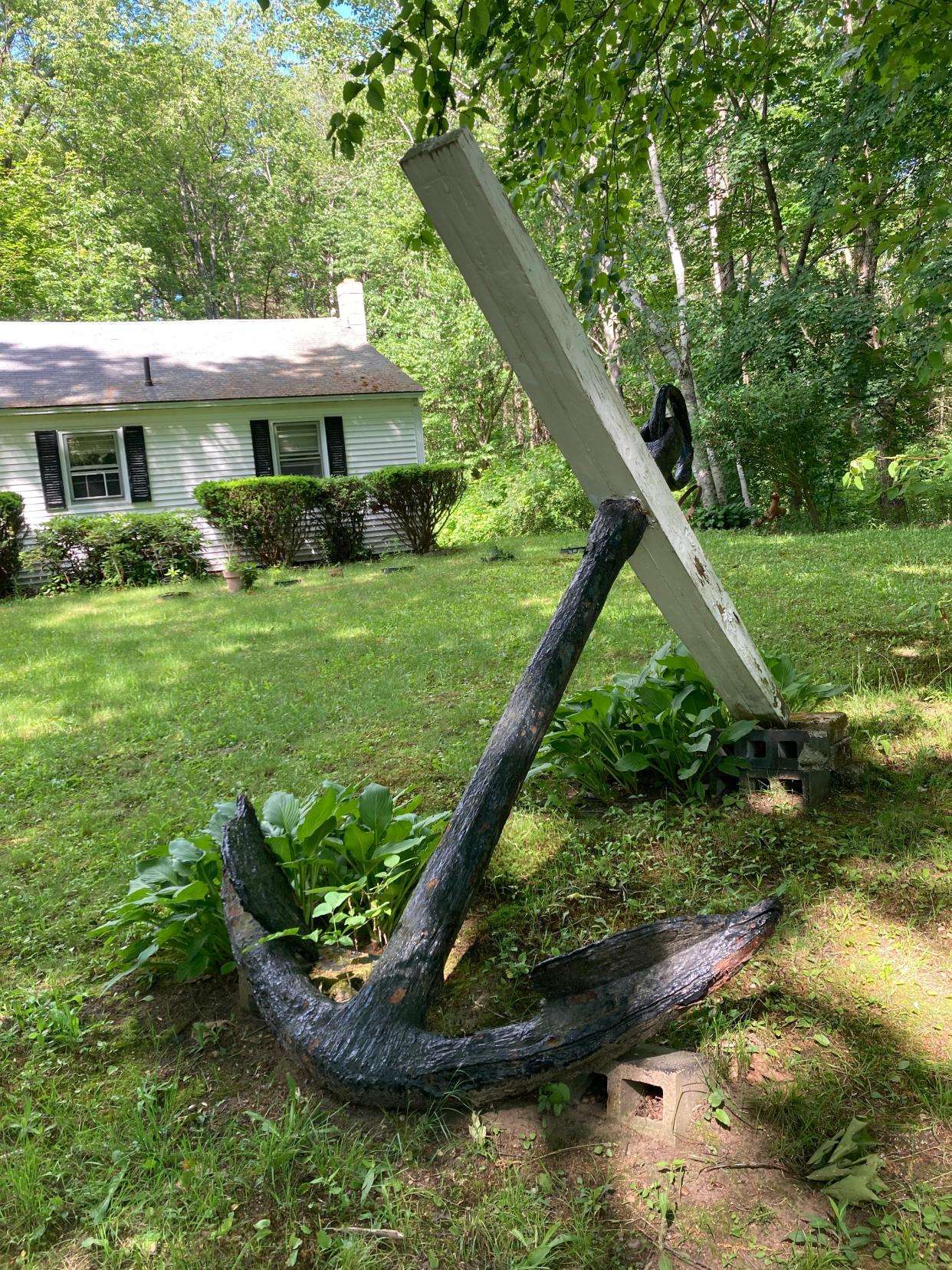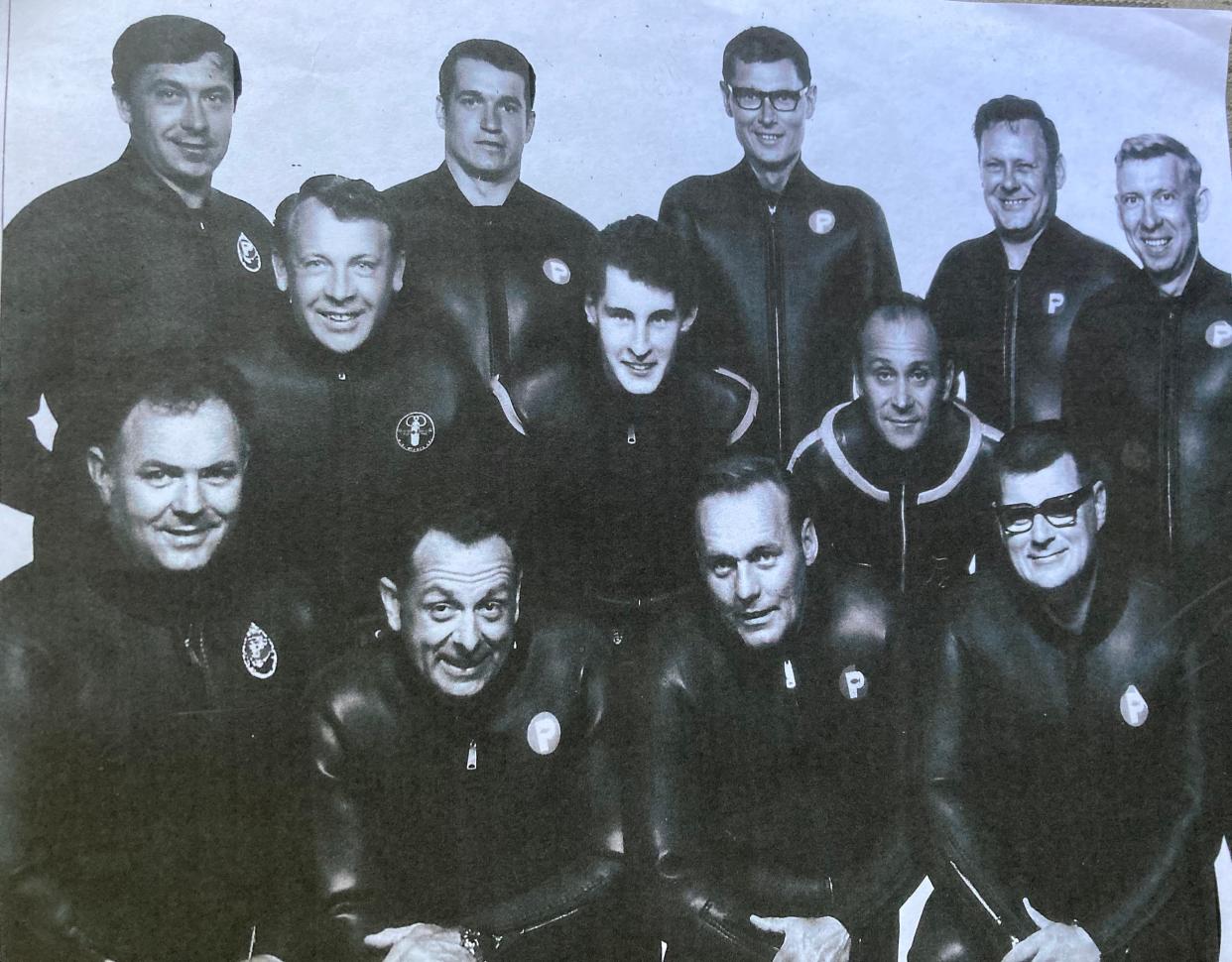Local view: A front yard self portrait in Templeton

When you enter a home, a lot is revealed about the people who live there -- the family or art pictures you see on the wall, the books they read, a display of hobbies or handwork, a huge or small TV, speakers and a rack of CDs, notes or photos on the refrigerator, the color on the walls and furniture. You feel like you know something about the people without even talking to them. The home has an ambiance, it's a kind of self portrait. However, the outside of homes are more generic. They may be beautifully landscaped or not, but there seldom is something that really introduces you to the family within.
I used the word "seldom" because there are some houses you pass that have something in the yard that is unique and makes you want to meet the residents to hear the story about them. You know the items represent something important in their lives -- their self portraits.
Ray Voutila has a huge anchor in front of his house on Hubbardston Road in Templeton. It caught my eye every time I drove by and I wondered about the significance of it. So I stopped by and Ray answered the door. He was excited to talk about the anchor and we set up a time to meet.
He was president of the Gardner Skin Diving Club which was a Civil Defense Team that organized in the early 1960s and was active for 20 years. They had about 25 members and belonged to the Massachusetts Council of Diving Clubs which had demanding exercises for members to meet for qualification. The exercises prepared them to perform challenging emergency underwater rescue operations. They recovered drowned bodies, and one time were called upon to retrieve parts from an airplane crash. (Gardner won a competition which the Council planned between the Massachusetts clubs. Ray said it required using an underwater compass to find objects.)
An advantage offered to divers who served on the Civil Defense Team was allowing them to get a lobster fishing license. Ray and his team enjoyed that privilege and fished at Cape Ann. Skin diving is a high adventure sport, and one time when they were diving for lobsters, they had an especially adventuresome experience.

Ray spotted an anchor, a very huge anchor. He said, "I could hardly believe my eyes." That find marked the beginning of a new challenge, a tough one that would take a lot of planning and ingenuity -- how to retrieve a huge anchor that was tightly wedged in the crack of a big rock 40-feet underwater. To further complicate the task, the flukes at the bottom of the anchor somehow turned and were under the rock, solidly anchoring it in place.
Challenge and adventure was what these divers liked. Ray said, "It was one of the greatest experiences of my life." It required a group effort, both mentally and physically. This task force put their heads together and came up with a brilliant plan using a 275-gallon oil tank.
Ray and his diving partner Armand Robillard filled the tank with water when they got to the dive site to make it heavy so it could be lowered to the anchor. Then they attached it to the anchor, and filled the tank with air, forcing out the water so it would rise. When it rose a little, the anchor loosened so they could turn it and free the flukes that were underneath the rock, and then the tank quickly rose to the surface with its buried treasure.
Three other friends were on land to pull it in, help load it onto a truck, and bring it to the truck-weighing station at Gardner State Hospital. The 10-foot-long anchor weighed 1000 pounds (half a ton)!
Ray was the one who spotted it, so it became his treasure to keep. Owning such a curiosity motivated him to research the history of anchors and how his might have gotten there. His conclusions made very good sense.
He learned that there was a big granite quarry and stone-cutting business in the Rockport area that started in the early 1800s and lasted for about 100 years.
Ships would anchor in the Cape Ann harbor and small boats would be rowed out to load the stones onto the big ships that would delivered them to cities along the east coast. Ray learned that the design of his anchor dated before 1860. It is likely that the ship could not raise the anchor from its wedged-in position and had to cut it free.
The quarry area is now called Halibut Point State Park, a scenic peaceful place to visit, picnic, and take a hike. You can see the quarry, the ocean, and granite slabs that were cut many years ago. Nearby you can visit the charming town of Rockport. Gerry and I went there many years ago and the story of Ray's s front-yard self-portrait tempts us to return.
Carole Gariepy is a Phillipston resident and author of “Dragging Gerry around the World” and “Why Go There?”
This article originally appeared on Gardner News: Ray Voutila's 1/2 ton anchor in Templeton came from Cape Ann waters
